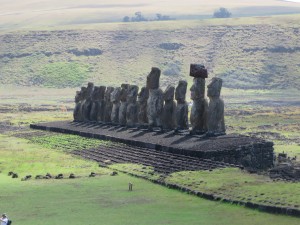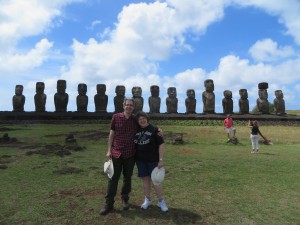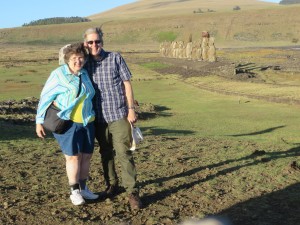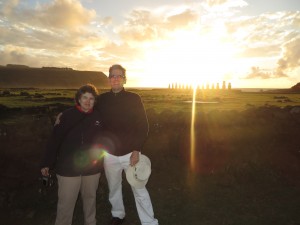Follow Scott
Recent Tweets
- Waiting for Twitter... Once Twitter is ready they will display my Tweets again.
Latest Photos
Search
Tags
anniversary Balticon birthdays Bryan Voltaggio Capclave comics Cons context-free comic book panel conventions DC Comics dreams Eating the Fantastic food garden horror Irene Vartanoff Len Wein Man v. Food Marie Severin Marvel Comics My Father my writing Nebula Awards Next restaurant obituaries old magazines Paris Review Readercon rejection slips San Diego Comic-Con Scarecrow science fiction Science Fiction Age Sharon Moody Stan Lee Stoker Awards StokerCon Superman ukulele Video Why Not Say What Happened Worldcon World Fantasy Convention World Horror Convention zombies
©2025 Scott Edelman
Three visits to Easter Island’s Ahu Tongariki
Posted by: Scott
Tags:
Ahu Tongariki, Easter Island
Posted date:
February 14, 2014 |
No comment
I’ve been finding myself surprisingly uncertain how to write up our trip to Easter Island in a way that will properly convey its wonders. And so I’ve decided that rather than attempting to create a single, all-encompassing post that will do so, I’ll just share random memories over the next week from our time there, and hope that together they’ll give a good picture of what it’s like to visit place. So let’s start with our three visits to Ahu Tongariki.
Ahu Tongariki is the largest moai platform on Easter Island. Though its 15 moai are upright today, they were toppled during internal conflicts that began in the 18th century, and then further damage was done by a tsunami in 1960 that swept the artifacts inland. But it was restored during the ’90s, and it’s now one of the island’s most-visited sites, followed only by Ranu Raraku, the quarry from which all moai were carved and transported, and Orongo, a ceremonial village important to the Birdman cult, with views of the smaller islands Motu Nui and Motu Iti.
But visitors to Easter Island are only allowed to visit Ranu Raraku and Orongo once during a visit, while all other sites may be returned to again and again, which meant that when we were in the mood for more awe, it was Ahu Tongariki that pulled us back.
Our first visit was on Monday, with a guide named Cristin Arvalo Pakarati, whom we’d hired through Easter Island Spirit. Guides aren’t mandatory—we bumped into a number of travelers who simply rented a car and took off on their own with a map—but we felt we needed more guidance than that. And Pakarati is more than just a guide—he’s also an artist, gallery owner, and the co-director of the Easter Island Statue Project. I never expected to get into a discussion on the relative merits of Frank Frazetta and Boris Vallejo while wandering among moai!
Ahu Tongariki was our third stop that first full day on the island, which also included visits to Hanga Te’e, Akahanga, Ranu Raraku, Papa Vaka, Te Pita Kura, and Anakena.
Standing before the ahu—which includes an 86-ton moai—I felt the weight of history as I had not since I was at Abu Simbel in Egypt. I’d have sat in quiet contemplation all day, if not for the other stops we needed to squeeze in that day … plus the rays threatening to blister me even through the SPF 50+ sunblock!
Our second visit to Ahu Tongariki took place late Wednesday, when we dared to rent a car internationally for the first time. Our two days of touring with a guide gave us a good handle on the layout of the island, and so we we felt ready to head out on our own to visit the sites as yet unseen and return to those we wanted to study again.
James Grant-Peterkin, owner of Easter Island Spirit, had told us that a cruise ship would be docking that day, resulting in certain sites being mobbed, and so we asked his advice on how to avoid the crowds. Apparently, passengers on cruise ships try to pack what we were planning to do over the course of a week into a single day, primarily hitting four sites—Anakena, Rano Raraku, Ahu Tongariki and Orongo—and then heading back to the ship by 4:30. So as long as we steered clear of those four during that time, we’d wouldn’t feel overwhelmed by tourists.
After visiting half a dozen previously unseen sites, we arrived once more at Ahu Tongariki around 7:30 p.m. Only a handful of cars were in the small lot nearby. By the time we were done searching the rocks at the rear of the site for petroglyphs—and there were plenty—we were the only ones there.
Which inevitably led to a selfie with 15 moai.
Our final visit to Ahu Tongariki took place Thursday morning before dawn. While we could have kept the rental car and driven there on our own, we decided against it. Turning a windy road to confront horses or cows—sometimes as many as 50 of them at a time, and quite unwilling to give way—is one thing during the day, but for a ride in the dark, we decided to let a local take over.
We were met at 6:30 in the morning by our guide, who drove us back to the site. Instead of standing directly in front of the moai, we waited for sunrise by the road, the theory being that if you’re right by the platform, you don’t get to witness the sunrise itself.
We remained for about an hour, until the run had risen precisely above the center of the 15 moai.
I was glad to have seen Ahu Tongariki at three different times of day—at dawn, late morning, and early evening—because the rock changed color depending on the angle of the sun. But whichever time we were there, the builders were never far from my mind.
I imagined the original Rapa Nui who’d erected those moai so long ago, and what emotions they’d felt as they looked upon their creations. Surely awe was one of them, awe which they had managed to convey to me across the centuries, awe I’m feeling still.




